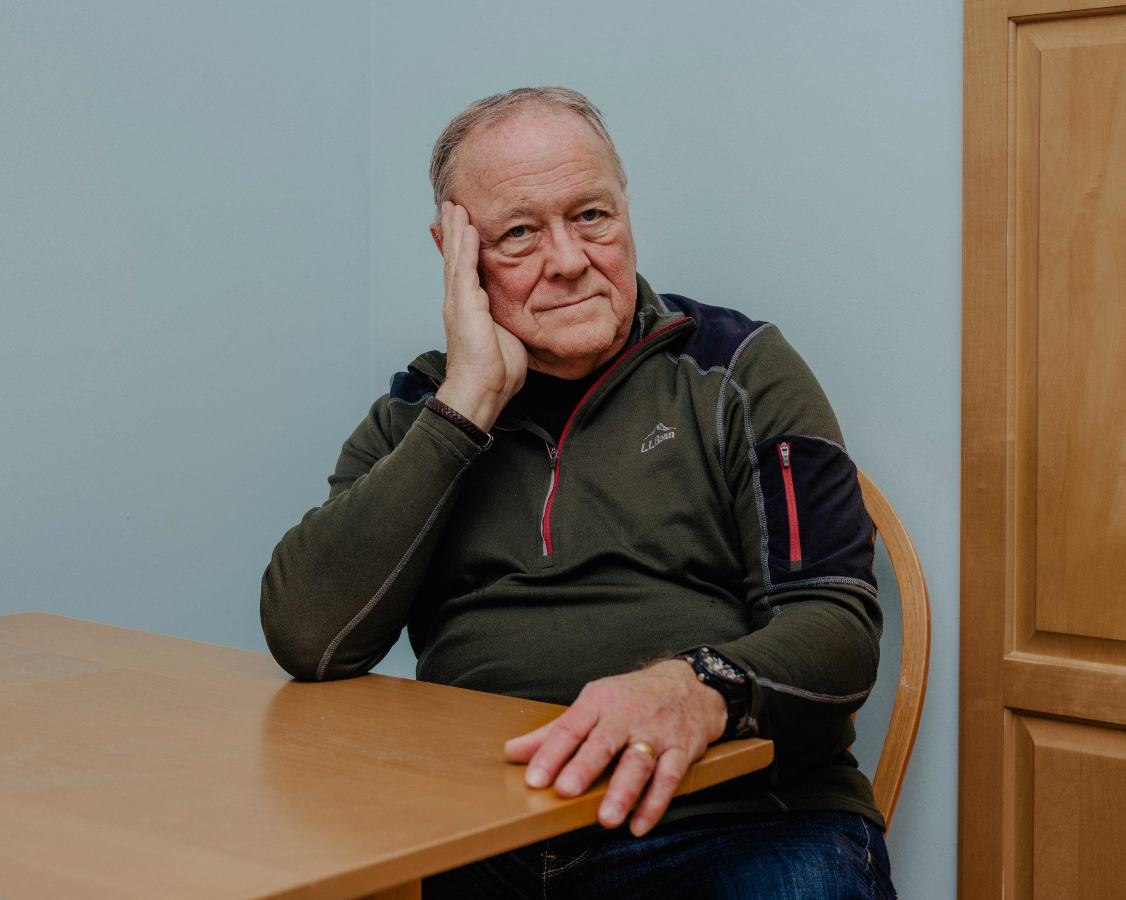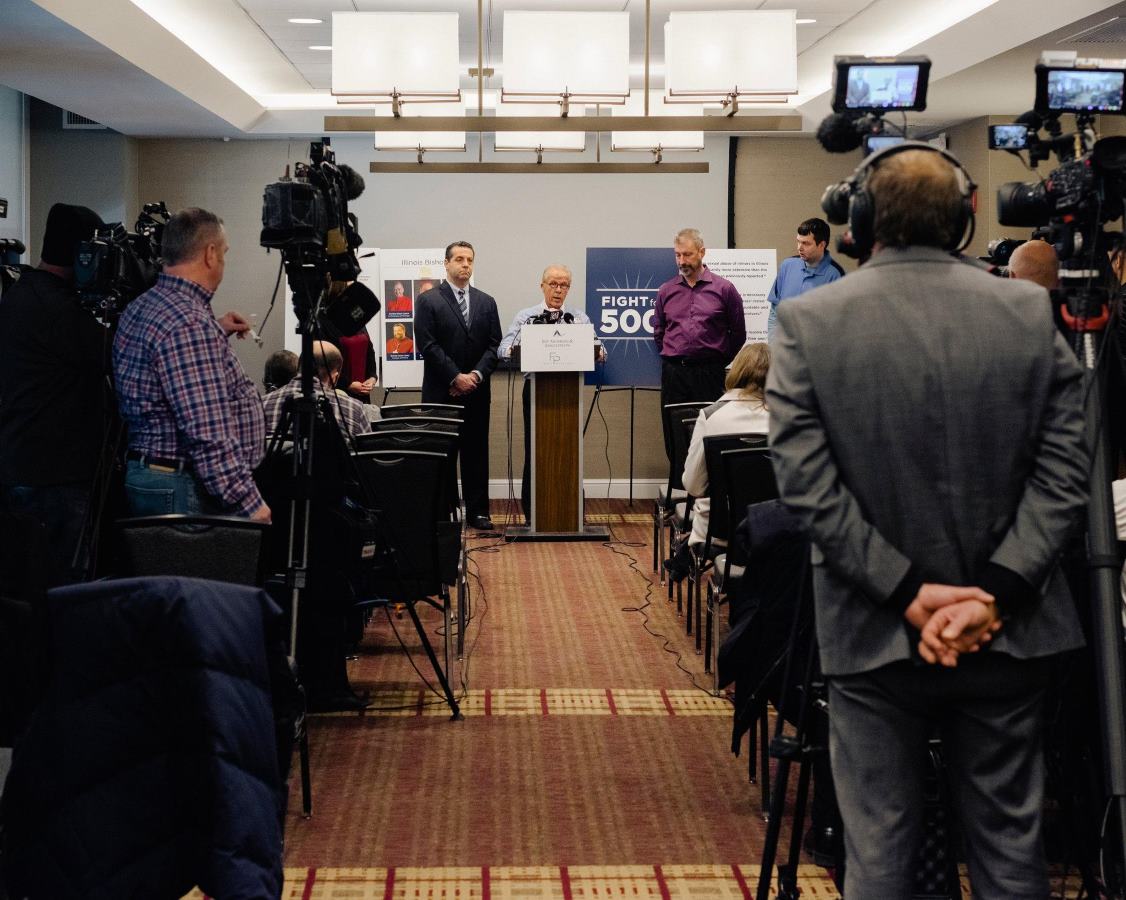|
Victims of Abuse by Religious Order Priests Say Their Claims Fall Through the Cracks
By Jack Healy
When Larry Antonsen decided to report a priest who sexually abused him during high school, he believed the Archdiocese of Chicago was the right place to go. Mr. Antonsen and his wife were lifelong churchgoers who sent their children to Sunday school and counted themselves as members of a parish in the archdiocese. The priest Mr. Antonsen was accusing had spent 14 years working at Chicago-area Catholic high schools. But Mr. Antonsen, who is now 72, said reporting the allegations dropped him into a maze of church bureaucracy, in which his accusations were passed from one office to another before being quietly set aside. The reason: The priest in question happened to be an Augustinian — one of dozens of religious orders that are overseen not by bishops, but by religious superiors in regions around the country and in Rome. Mr. Antonsen said archdiocesan officials told him to take his complaint to the Augustinians. “They said because it was a religious order, they didn’t handle it,” Mr. Antonsen said. Jesuits, Franciscans, Benedictines, Augustinians: the names are iconic, their founders immortalized by sainthood, their members often bound together by vows of poverty and obedience. But when a priest or brother in a religious order is accused of abuse, victims and advocacy groups say their accusations are often mishandled because they are caught between separate institutions within the church: the dioceses that say it is not their responsibility to investigate, and religious orders that then fail to handle the claims. Survivors said the bureaucratic distinction has turned them into second-class victims who frequently fall between the cracks. In Illinois, an attorney general’s investigation into clerical sex abuse found widespread failures to investigate claims — and singled out the way diocesan officials forwarded accusations against religious order priests to the orders and then often closed the books. “Little to no follow up from the dioceses was commonplace, leaving survivors without answers or resolutions,” the report said. In Pennsylvania, a grand jury report highlighted abuses by members of religious orders and found sloppy record-keeping about order members. Victims of religious order priests are also specifically excluded from a compensation fund set up by archdioceses in Philadelphia and New York. When most of the bishops have released lists of priests accused of abuse, they have omitted religious order priests who worked in their dioceses, leaving the public with a potentially incomplete view of the problem. Religious orders represent about a third of all American Catholic clergy. American bishops in recent days were near Chicago on a weeklong spiritual retreat on the sex abuse crisis, where they were focused on prayer rather than formulating policy. Bishops do not oversee religious orders the way they preside over parishes and their diocesan priests. But bishops do give order priests permission — called “faculties” — to work and minister in their communities. The order sends a letter saying the men are in good standing and face no misconduct allegations. While bishops can pull that permission and restrict where religious-order members work, diocese officials have argued they do not have the power to investigate or remove priests from the order. But advocates for victims said church officials become legally responsible once they grant permission for clergymen to work in a diocese. “The religious orders have never gotten the scrutiny or the attention the Catholic bishops have gotten,” said Jeffrey Anderson, a lawyer who has filed suits against Catholic officials and religious orders on behalf of victims. In an interview, William Kunkel, the Archdiocese of Chicago’s general counsel, and Leah McCluskey, its director of child abuse investigations, said the archdiocese reports every accusation to state attorney’s offices and follows up on allegations against priests from religious orders. They said that while it was up to individual orders to carry out investigations, the archdiocese tracks their outcomes and sometimes acts as a go-between if a victim does not want any contact with priests from the same group as the accused. “We deal with these allegations very seriously and we follow up on them,” Mr. Kunkel said. “We certainly stay involved because they’re important issues to us.” About 1,300 clergy from religious orders have been accused of abuse, according to tallies by advocacy groups, and the orders are now facing pressure to reveal which of their members have sexually abused children. Last month, the Midwest and Maryland provinces of the Jesuits released 153 names of credibly accused clergy, and the organization said it would release more records this year detailing accusations against priests in the Northeast. “It’s coming out piecemeal,” said Father Mark Padrez, president of the Conference of Major Superiors of Men, an association of religious orders in the United States. “We want to be transparent, and we want to rebuild trust in the church.” His own Dominican province in the western United States recently hired an outside law firm to sift through personnel records and release names of abusers stretching back to the 1930s. The Conference of Major Superiors of Men has encouraged orders to release names, but the group has no authority to force disclosures, Father Padrez said. After the clerical abuse scandal exploded in 2002, the Conference of Major Superiors of Men adopted its own reforms following the United States Conference of Catholic Bishops. Orders added victim assistance offices and background screenings for candidates, and hired accrediting companies to audit their sexual abuse responses. The fate of abusers in religious orders can differ from diocesan priests. A 2013 update on the orders’ response to the crisis says that canon law requires orders not to expel abusers if they are repentant, but to instead try to keep them within their religious communities, under close supervision and away from children. Last January, Robert Krankvich, 37, said he was gripped with terror when he picked up the phone to report his own story of sexual abuse to the Diocese of Joliet. Mr. Krankvich said it began when was a freshman at Providence Catholic High School, and the school’s charismatic president, an Augustinian priest named Richard McGrath, befriended him. Mr. Krankvich filed a lawsuit, which is still pending, against the Augustinians saying that Father McGrath repeatedly abused him from the age of 13 to 15. Years later, after suicide attempts, struggles with alcohol and drugs and depression, Mr. Krankvich saw news reports that Father McGrath had left the school after a student reported seeing him look at “potentially inappropriate material” on his phone. Father McGrath could not be reached for comment. But when Mr. Krankvich called the Joliet diocese, he said church officials referred him to a priest who was Providence’s new president. “It felt horrible,” he said. “Now you want me to talk to another priest from the school where this happened. I felt betrayed.” It was the last time he tried to contact the church. Mr. Antonsen said he decided to report his abuse in 2006, after blocking out the memories for years. One weekend, when he was a sophomore at St. Rita High School, he said a priest named the Rev. Michael P. Hogan offered to take him to a camp in Milwaukee, and the two ended up drinking in a motel room. Mr. Antonsen said the priest started touching him, and he ran from the motel. Mr. Antonsen said his life soon spiraled downward. He quit his high-school football team. His grades plummeted. He developed a drinking problem. After Mr. Antonsen took his complaints to the Archdiocese of Chicago, he said he was connected with a priest from the Midwest Augustinians and told his story once again. The Augustinian official said Father Hogan was living in a nursing home and denied the abuse. Mr. Antonsen said he pressed the order to put out a call for other victims or look deeper into his claims, but they demurred. “That was the last they ever did,” Mr. Antonsen said. “They just believed him.” A 2006 letter to Mr. Antonsen from the Rev. Jerome Knies, then the vicar provincial of the Midwest Augustinians, noted Mr. Antonsen’s request that the order conduct a wider search for victims and urged him to take up their offer of counseling “in the interest of healing and reconciliation.” Father Hogan died in September 2008, and has never been named as an accused abuser by church officials. His obituary on the website of the Midwest Augustinians makes no mention of Mr. Antonsen’s claim or any others, and honors his work as a teacher, vice principal and substance abuse counselor. The archdiocese said it had followed up on Mr. Antonsen’s complaint by alerting the state’s attorney of Cook County and staying in regular contact with the Augustinian official handling his allegations. In a statement sent late Wednesday, the Midwest Augustinians acknowledged receiving a complaint about Father Hogan but said the accuser had “subsequently discontinued communications with the Augustinians regarding this allegation.” On its website, the order says it has taken rigorous steps to prevent abuse, and encouraged victims to come forward and “find us willing to address their needs with a pastoral response.”
|
.
Any original material on these pages is copyright © BishopAccountability.org 2004. Reproduce freely with attribution.

